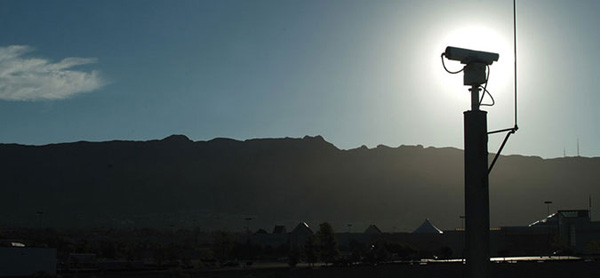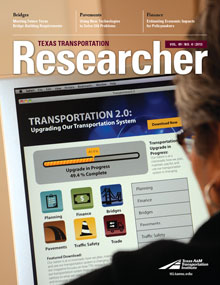Project Designed with ITS in Mind Will Save Time and Money
![]()
A diverse group of partners is creating a new, high-tech port of entry and connected state highway in the San Diego/Baja California region. The project represents collaboration between the Federal Highway Administration, the San Diego Association of Governments, the California Department of Transportation, the U.S. General Services Administration, and U.S. Customs and Border Protection. These partners are designing a new tolled border crossing that will integrate intelligent transportation systems (ITS) from the beginning stages of the project.
Currently, the estimated $650 million project is in the planning stage, which includes an ITS predeployment study led by the IBI Group with support from TTI.
“Our role is to help the different stakeholders identify and develop technologies that can be implemented at the new port of entry — to not only measure the crossing times, but also offer potential approaches to implement dynamic toll pricing models,” says Juan Villa, program manager of TTI‘s Mexico City Office. “Technology plays an extremely important role because by using technology, you can increase the efficiency of both truck and vehicle traffic using the new port of entry.”
The ITS predeployment study is assessing innovative operating concepts and technologies that can help to develop a secure, state-of-the-art border crossing. Examples of evaluation areas include:
- traveler notification of border wait times,
- pricing and
- truck segmentation to streamline traffic.
The cross-border ITS revenue collection technologies will provide value to the customer and fund the point of entry through dynamic toll pricing models based on border wait/crossing times. The ITS solution will focus on congestion management to provide predictable wait times for passenger and commercial customers. Because the new crossing will be in proximity to existing nontolled crossings, it will need to provide user value that the current free crossing alternatives do not offer, potentially something above and beyond shorter crossing times.
“This is the first time that ITS has been included in the development of a border crossing project,” says Villa. “In the past, ITS technologies had to be retrofitted into an existing port of entry. Since this is a new project, we have the ability to implement and design these technologies from the very beginning. The main benefit to the public is that they may now access information such as crossing wait times that will allow them to make travel decisions in advance, and that could save them time and money.”



